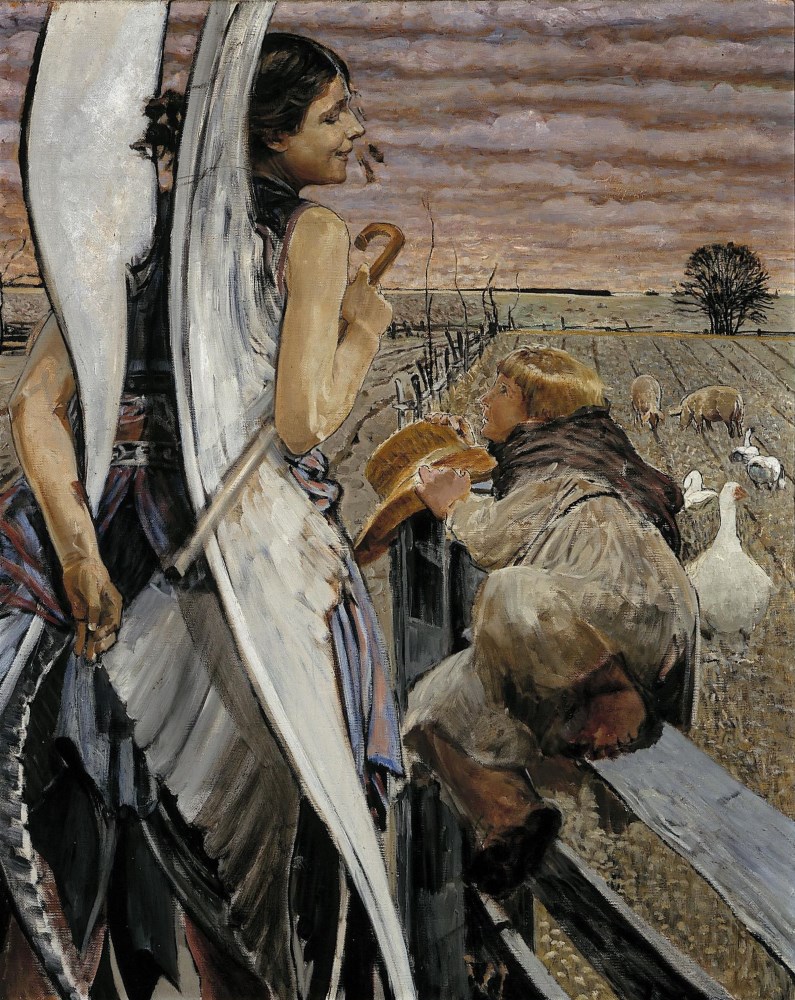Description:
Jack Malczewski (1854-1929) had a love for art and romantic literature, especially the poetry of Juliusz Słowacki, which he inherited from his family. He came from a szlachecki family, although not wealthy. His father Julian supported him on the path of a painting career. The events of 1863, the January Uprising and subsequent repression, left a deep impression on the young artist. His first teacher was Adolf Dygasiński. He spent his youth from 1867 to 1871 at the manor of the Karczewski family in Wielgim. In 1873 he began his studies at the Academy of Fine Arts in Krakow under the tutelage of Jan Matejko. He was a student of Władysław Łuszczkiewicz. He also studied at the École des Beaux-Arts in Paris. He traveled to Italy, Vienna, Munich, Greece, and Asia Minor. From 1896 to 1900 and 1910 to 1914 he was a professor at the Academy of Fine Arts in Krakow. In 1912-1914 he became its rector. He started with idealizing realism, then naturalism, with the main theme of his works in this period being the fate of exiles to Siberia and the inspiration of Juliusz Słowacki’s “Anhellim”. At the same time, fantastic and allegorical views began to appear in Malczewski’s work. After his father’s death in 1884, the recurring theme in Malczewski’s work is Thanatos – the god of death. After 1890 his art became completely symbolic. Works manifesting the turn to symbolism are: “Introduction” 1890, “Melancholy” 1890-1894, “Circle of Error” 1895-1897. The artist took up existential, historical and artistic themes, intertwining classical and biblical motifs with native folklore and the Polish landscape so important in his work. Form, color, monumentality of the presentations and their expression became his trademark.
Description of the painting:
Angels are characters often appearing in Jacek Malczewski’s works. Interestingly, these extraordinary spiritual beings take on a very physical and gender-specific form in the artist’s paintings. Most of them have female features. They are portrayed as messengers, angels of death, or guardians, companions on a journey. They become the link between the divine and earthly worlds. The painting “Let’s Go Together” was created under the influence of Malczewski’s inspiration by Teofil Lenartowicz’s poem “After the Angel”. It shows a boy who without hesitation leaves the familiar temporal world and sets off on a journey with an angel, a guardian who will protect him throughout the journey of life.
In this painting presented today we can recognize the characteristic winged figure and little boy. The angel holds a small wooden shepherd’s staff in his right hand. The boy passes through the fence that separates him from the angel. His left hand presses a straw hat to the bar. He leaves the enclosure and animals he was taking care of to embark on a journey into the unknown. The setting sun on the horizon and swirling clouds increase curiosity and the feeling of unease associated with the journey.
The painting “We’ll Go Together” was painted under the influence of the artist’s inspiration by Teofil Lenartowicz’s poem “After the Angel”:
“Angel! I’ll go with you,
Leave my mother and father behind […]
I’ll even leave my dress,
And so in my shirt, as I stand,
My silver – I’ll give you my hand
And we’ll go together […]
If bandits surprise us somewhere
Or a dark thundercloud comes,
Your wings will surround me
And I will hide under feathers […]
In the evening we’ll go to the field,
For the golden wheat ears […]”.
We can also find the angelic theme in the works of Juliusz Słowacki, who was so close to Malczewski. The title of one of the poet’s works, “Angels Stand on Family Fields”, may be interpreted as the selection of scenery in which they most often appear on the painter’s canvases. In iconography, an angel is a symbol of goodness, purity, innocence, but also obedience. Every person has two angels: a left fiery one and a right guardian. The child, who is very aware of this, makes a choice. It tries to capture the messenger with its own person, almost deliberately. It sees more than the average recipient, so it looks at its guardian angel, who is invisible by nature, directly in the eyes with confidence. With a sense of security, it intends to follow the Divine Guide. It even gives him his shepherd’s staff. It is used to maintain order in the herd, but also to protect it, and now – with all the responsibility it carries – it passes into the hands of the angel. Often, the figure of the shepherd is interpreted as the embodiment of the qualities of an artist, who sees more, strives further, yearns for an ideal being filled with spirituality, order and lack of fear.


